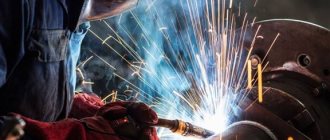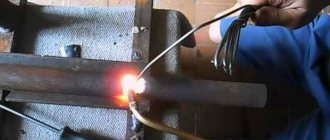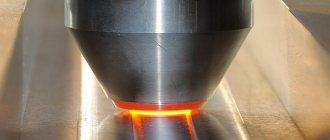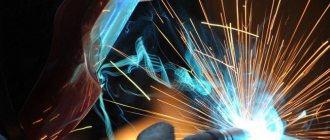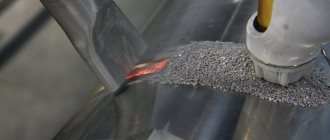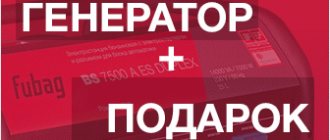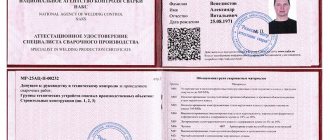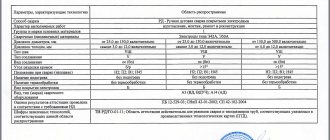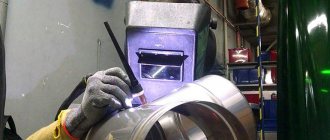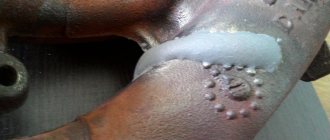06/08/2020 Author: VT-METALL
Issues discussed in the material:
- Gas welding principle
- Scope of gas welding
- Pros and cons of gas welding in general
- Advantages and disadvantages of the left-hand method of gas welding
- Advantages and disadvantages of the right gas welding method
- Criteria for choosing left and right welding methods
- Other popular gas welding methods
- Safety precautions for gas welding
There are various methods of gas welding. Some of them are more in demand, others less. Each method has a certain set of advantages and disadvantages - the choice depends on the specific situation.
In one case, the most effective method of gas welding will be the right one, in the other - the left one. Sometimes welding using pools is necessary, sometimes using a through bead. Which method is best to use and when? This is discussed in our article.
Gas welding principle
The peculiarity of the gas welding method is that during operation a stream of hot gas is supplied to the welding area. It heats the joining surfaces of the workpieces to a critical temperature and liquefies the filler material. The latter is supplied to the heating site from the opposite side or is fixed directly to the nozzle.
All known gas welding methods involve protecting the material from the formation of an oxide film due to the fact that air is displaced from the site of exposure by a special gas. After the seam cools smoothly, the elements are firmly fastened together. To perform this type of work, several types of gas are used:
- hydrogen and oxygen;
- oxygen and acetylene;
- methane and oxygen;
- propane and oxygen;
Methods for gas welding of metals allow the use of any flammable gas with an admixture of oxygen, but acetylene is best suited for these purposes. Its operating temperature reaches +3400 °C, while propane is only +2800 °C.
General safety rules
When performing welding work, safety rules must be observed. Only serviceable equipment may be used. The work place must be at least 10 m from the source of open fire.
Recommended reading: How to use ultrasonic welding
The post must be equipped with individual means for extinguishing fires. If only acetylene is used, then a carbon dioxide fire extinguisher or sand is required.
Water should not be used to extinguish fires caused by this substance. If there is a fire, you need to bend the hose in the area of the gearbox, and then close all the valves.
Scope of gas welding
The use of gas welding allows you to solve such production problems as:
- soldering (including repair work);
- surfacing;
- cutting rolled metal and metal pipes into individual parts;
- welding of elements into one structure.
Gas welding machines are often used in industrial production and garage workshops, construction and auto repair shops, as well as in public utilities. With the help of such a unit, various elements of complex structures, thin-walled pipes are connected, and joints of products made of non-ferrous metals are made.
Soldering and cutting, performed using gas welding, allow you to achieve the desired result with the proper quality.
Soldering is carried out due to three key factors: strong heating of the edges of the elements being connected occurs, the solder melts, and a special antioxidant substance - flux - is added to these two components. Due to the mutual penetration of solder molecules and the material of the structural parts (diffusion), a strong, neat seam is formed at the joint. If necessary, it can be subjected to further processing.
VT-metall offers services:
Surfacing is the coating of a base material with a layer of metal with other characteristics. To do this, the soldering surface is preheated to the “fogging” temperature. Using this method of gas welding, worn surfaces are often repaired, parts are lengthened or expanded, and the wear resistance and strength of elements are improved. Thanks to this, you can reduce the cost of repairs, reduce the consumption of rare or expensive materials, and extend the service life of the product.
Separately about pipe welding
When welding pipes at the joint, no sagging should form on the inside of the seams. They will impede the movement of liquid through the pipe. In addition, you cannot melt through the walls.
Pipe welding is carried out using one layer and in just one pass. In this case, the convexity of the seam should not exceed 1-3 mm. The joint should be as smooth as possible.
Pros and cons of gas welding in general
Any method of connecting metal elements into a single structure has its advantages and disadvantages. The gas welding method, for example, is distinguished by the fact that under a stream of gas the working surface heats up relatively slowly. However, it is impossible to clearly determine whether this is good or bad.
The advantages of this heating intensity of the working surface include:
- Smooth thermal effect. This property is especially important when working with non-ferrous metals.
- No need for a powerful power source.
- Possibility to adjust the strength of the hot gas jet.
- Ease of switching operating modes due to additional controllers.
Disadvantages of slow heating of the working surface when using the gas welding method:
- Most of the heat during operation is dissipated in vain, so this method of connecting parts has low efficiency.
- Due to the increased heat impact zone, it is impossible to perform work that requires high precision.
- The economic costs of gas when performing work of this type exceed the costs of electricity.
- The components of gas welding equipment (hoses, cylinders, etc.) are not easy to transport.
- To obtain high quality seams, extensive practical experience is required.
Much of this type of equipment for metal cutting or welding is manually controlled, so in such cases it is impossible to automate the production process. Today there are two main methods of gas welding: left and right. Let's take a closer look at each of them.
Requirements according to GOST
The gas welding process is manual; the quality of the weld is assessed subjectively and depends on the skill of the welder. There are no GOST standards for the results of work. However, there are a number of requirements for compliance with the technology.
The quality of calcium carbide used in welding is regulated by GOST 1460-2013. In addition, regulations establish the pressure parameters in the reducer and cylinder, the characteristics of the filler wire, and the requirements for the generator. There are GOST standards for burners and hoses.
Advantages and disadvantages of the left-hand method of gas welding
The operating principle of the left-handed method is that the nozzle moves from right to left. In this case, the flame tends forward to the still unheated area of the product, and the filler material is fixed in front of the fire flow. Uniform diffusion and heating of the edges of parts is ensured by zigzag movements of the apparatus.
This method allows you to achieve high quality seams with the same height and width, as well as impressive efficiency at low financial costs. However, you will get all this only if the metal thickness using the left gas welding method does not exceed 3 mm.
We recommend articles on metalworking
- Steel grades: classification and interpretation
- Aluminum grades and areas of their application
- Defects in metal products: causes and search methods
This feature is due to the fact that the flame heats the metal lying in front. The left method is considered less complex and requires less skill.
As a rule, it is used for working with 2-3 mm steel workpieces, as well as for metals with a low melting point. When processing parts thicker than 5 mm, the right method will be faster.
The diameter of the filler wire for left-hand welding is determined by the formula:
The advantages of the left method are as follows:
- the seam is aesthetically pleasing – smooth with a slight scaliness;
- there is little thermal impact;
- quickly and efficiently copes with workpieces thinner than 3 mm.
Disadvantages of the left method:
- a lot of heat is lost;
- the weld pool is ahead of the movement of the apparatus;
- difficult to regulate penetration;
- the effect of the protective atmosphere is limited in space.
Weaknesses and nuances of technology
If we started with the pros, it would be fair to dwell on the cons. The disadvantage of the heating rate of the metal is that it is low.
In addition, the working area with this method is “spread out” - a very large heating zone for the metal, due to which a lot of thermal energy is lost. There is also such an unpleasant phenomenon as warping.
Thus, the productivity of the working process is not very high, and with increasing thickness of the edges of the workpieces being welded, it decreases even more.
Therefore, if your metal sheet is more than six millimeters thick, start thinking about using gas welding somewhere else. It is better to cook a thick edge, for example, using the arc method.
Injector and non-injector burner.
Gas welding is not the most expensive welding method, this is well known. But welding gas - acetylene and oxygen, which they like to use as a welding gas mixture, are still more expensive than electricity.
And if you add the rather high risks of explosions and serious fire danger that instantly arise if flammable liquids, gases, oxygen cylinders and elemental calcium carbide are handled incorrectly, the enthusiasm decreases a little.
Gas welding technology is excellent for a wide range of welding jobs: from joining aluminum and steel parts to working on bronze and cast iron.
Let us immediately note that gas welding is capable of almost all metals, including such capricious metals as copper, lead or cast iron: they are welded more easily by gas technology than by any other.
Advantages and disadvantages of the right gas welding method
When welding in the right way, the direction of work changes: in this case, the nozzle moves from left to right. In this case, the flame is directed towards the already treated areas, and the filler rod is attached directly behind it.
During the operation, the torch handle performs transverse vibrations of small amplitude. Due to the fact that the flame is directed towards the scar, the weld pool is better protected from air and the nitrogen and oxygen it contains. In addition, the seam with this method of gas welding hardens more smoothly.
The heat from the torch flame spreads not only to the weld pool area, but also to the metal seam and the area around it. Thus, it is as if additional heat treatment occurs.
Using the filler rod, as with the left method, zigzag movements are performed, but with a smaller amplitude.
The efficiency of the right method is higher, since less heat is wasted. Thanks to this, the weld cutting angle is reduced from 90° to 60–70°, which, among other things, reduces the volume of deposited material and reduces warping of the product.
As noted earlier, the optimal metal thickness for the right gas welding method is 5 mm. This method is also suitable for working with materials with high thermal conductivity. The diameter of the filler wire in this case is calculated by the formula:
Pros of the right method:
- sufficient amount of heat generated;
- strong seam;
- gradual cooling of the metal;
- effective protective atmosphere of the torch.
Disadvantages of the right method:
- the seam relief is scaly;
- working with workpieces thinner than 3 mm is difficult.
When processing parts up to 8 mm thick, the nozzle is moved along the edge line evenly, without hesitation. The end of the filler wire is lowered into the weld pool and, as it were, the liquefied metal is mixed with it in a spiral motion. This makes it easier to get rid of toxins and oxides.
A few words about consumables
What gas is used for welding is not an unimportant question that you need to understand in order to make the right choice. The types of gases used vary and the choice depends on several factors.
Oxygen
Oxygen, for example, is completely colorless and odorless. It has a special role; it acts as a catalyst for metal melting processes during welding. Oxygen is stored and transported in cylinders with constant pressure. This is not an easy task, but it is quite doable.
The main thing is to know and follow the safety rules when handling oxygen cylinders and the gas itself. For example, the presence of technical oil can lead to fire: therefore, it is necessary to strictly exclude the slightest contact with such oil.
Gas burner flame.
In no case should there be a source of heat or direct sunlight in the rooms where cylinders are stored.
How to obtain welding oxygen: this is done quite simply - from atmospheric air using specialized equipment.
Oxygen is divided into three types based on purity:
- premium grade with a gas concentration of 99.5%;
- first grade with 99.2%;
- the second – with 98.5%.
Acetylene
This is the second most popular gas used in gas welding for both welding and cutting. It is also colorless and odorless. Acetylene may explode if pressurized or heated. It is made from calcium carbide and water.
Acetylene is not the cheapest gas, but its advantages make it very popular among welders. It's all about the combustion temperature - it is remarkably high for acetylene, especially in comparison with cheaper gases such as methane, propane or kerosene vapor.
Flux and filler wire
These are the main participants in the process of weld formation. The filler wire must be absolutely free from the slightest signs of dirt or corrosion. Sometimes, instead of wire, you can use a strip of the same metal as the workpiece for welding.
Fluxes are necessary to protect the weld pool from the harmful effects of external factors. Most often, borax and boric acid are taken as components of flux mixtures, which can be applied directly to the workpieces being welded or to the filler wire.
The only metal that can do without a flux mixture is carbon steel. Well, a special need for the presence of flux arises when welding copper, aluminum and their alloys.
Left and right welding methods: selection criteria
The thickness of the workpieces is not the only criterion for selecting a manual gas welding method. The choice is also influenced by the spatial position of the elements. If they are in the lower position, then they are selected based on the thickness of the metal as described earlier.
If the intended seam is in a vertical plane, the left-hand method is used, that is, the torch moves from right to left following the filler rod. When working with scars in the horizontal plane, the left method is also chosen. In this case, the flame is directed towards the forming seam. To avoid leakage of liquefied material from the weld pool, it is performed with a slight distortion.
If the site of the intended scar is on the ceiling, use the right gas welding method. In this case, the flame flow is directed towards the formed seam, which prevents material from flowing out of the weld pool.
The effectiveness of a particular method depends on the conditions under which it is applied. It is generally accepted that the right method is characterized by greater productivity and energy efficiency, but this is only true in cases where the thickness of the workpiece exceeds 5 mm, and the material itself has high thermal conductivity. For thinner metals, the left method is optimal.
Nuances with different seams and different metals
Horizontal seams are formed using the right-hand gas welding method. There are situations when the process is carried out from right to left with the mouthpiece at the bottom of the bath and the wire at the top. This way the seam is formed faster and easier, and the molten metal in the bath does not flow down.
Vertical seams, on the contrary, are made in the left way with a bottom-up direction. If the metal is thick, use a double bead seam.
Ceiling seams are one of the most difficult to perform. Here you first need to heat the edges of the workpiece, then until they melt, a wire is placed in the bath, which quickly melts.
The liquid metal in the bath is kept from flowing down by the pressure of the gases from the burner. Welding is done in the right way. It is best to use multi-layer seam technology with multiple passes.
Low carbon steel can be welded with almost any gas. It is important to select the correct filler wire: it must also be made from low carbon steel.
Alloy steels come in very different compositions. Therefore, there is not and cannot be a single method of gas welding for them. If the alloy is heat-resistant and stainless, parts made from it are welded using wire containing nickel and chromium.
There are certain brands that can only be welded using molybdenum as a filler wire.
Copper and its alloys always require a high flame. During melting, it is extremely fluid, so the gap must be kept minimal. In addition to copper wire, flux mixtures are used to deoxidize the weld metal.
Brass is a very difficult metal to work with due to its composition. There is a high risk of pore formation in the weld due to the volatility of zinc. This risk can be significantly reduced by supplying more oxygen to the burner mixer and using brass wire as an additive.
Bronze is another capricious alloy. During welding, it is important not to burn out its important elements from the composition: tin, silicon and aluminum. Therefore, the flame should be reducing, and the additive should be bronze with the addition of silicon, which will help further deoxidize the seam.
Other popular gas welding methods
- Welding using baths.
The principle of operation is directly reflected in the name of the method - as the work progresses, more and more new weld pools are formed. When one of them occurs, the end of the filler rod is lowered into it. It liquefies there, and then plunges into the reducing portion of the flame. At this time, the nozzle is moved further along the seam - to where the next bath will be formed. Each of them is carried out as if overlapping, overlapping the previous one by about a third of the diameter of the filler material.
This gas welding method is widely used for fillet brazing of pipes made of low-alloy steel or low-carbon alloys, as well as when working with thin metal plates.
- Welding using a through bead.
The welding operation is as follows: first, the metal structural elements are installed in a vertical plane so that between them there is a gap equal in width to half the thickness of the sheet. Then the nozzle moves evenly along the groove, melting the upper edge of the workpiece hole. At the same time, a layer of molten metal is applied to the lower part of the furrow. In this case, a scar is formed in the form of a roller, which connects the structural elements. The seam is dense, without slags and pores.
Safety precautions for gas welding
Welding work is particularly dangerous. The use of the gas welding method is no exception. It is worth noting that it requires increased precautions, since welding gases: oxygen and acetylene pose an additional threat. Compliance with safety standards will protect the technician from work-related injuries.
The generator and the gas cylinder must be at least 5 m apart from each other. To avoid damage to the connecting hoses, they must be suspended. If other specialists are also working in the room for gas welding operations, then protective items should be placed around its perimeter.
Before igniting the burner, the hoses are purged: first, the oxygen supply is opened, and then the acetylene supply. Only after this can the flammable mixture be ignited. It is worth making sure that the channels are always clean, otherwise popping or kickback may occur.
Do not operate the welding machine with oily hands or allow the equipment to come into other contact with oil, as this may result in an explosion. If a kickback does occur, it is necessary to promptly shut off the gas supply valves on the cutter, cylinders and water seal. Flames spread slowly through the hoses, but detonation may occur if the specified measures are not taken immediately.
To avoid kickback when working with one of the gas welding methods, it is important to exclude the following factors:
- drop in oxygen pressure - this can occur due to the end of the gas in the cylinder, clogging of the injector or freezing of the reducer;
- the distance from the nozzle to the part is too close - this reduces the gas flow speed;
- excessive heating of the welding tip or pipes;
- clogging of the mouthpiece - this provokes a reduction in the passage opening and, as a result, a drop in the gas flow rate.
If the torch overheats, it is necessary to pause welding work and cool it, for example, in water. An acetylene generator should not be emptied until the gas runs out. Otherwise it may cause backlash.
When performing work using any gas welding method, gas leaks must not be allowed. The most vulnerable places: taps and plugs. You can identify the hole using a soap solution.
Equipment used
The set of equipment for gas welding includes:
- Water seal to prevent damage to equipment components from backfire. Installed between the burner and the acetylene source. As evaporation occurs, water is added.
- Oxygen and flammable gas cylinders or acetylene generator. According to safety regulations, the gas should not come into contact with the paint. Therefore, the top of the cylinders is not painted. To prevent an explosion when acetylene comes into contact with copper, valves made of a different metal must be installed on cylinders with this gas.
- Gas burner, regular or injection.
- Reducers to reduce the pressure of gas and oxygen at the outlet of the cylinders.
- Hoses for connecting the gas burner to cylinders. Hoses for flammable gases have a yellow stripe.
Gas welding equipment
If gas welding work is carried out in different places, the equipment is installed on a trolley with appropriate fastenings. Enterprises install stationary gas stations with ventilation and cabinets for storing cylinders.
